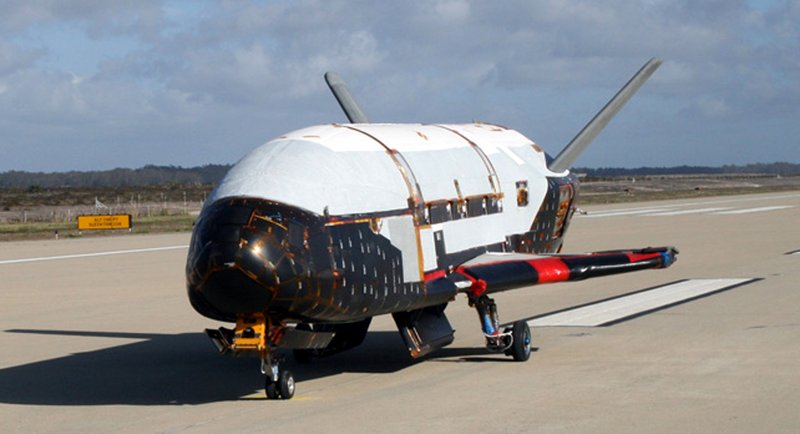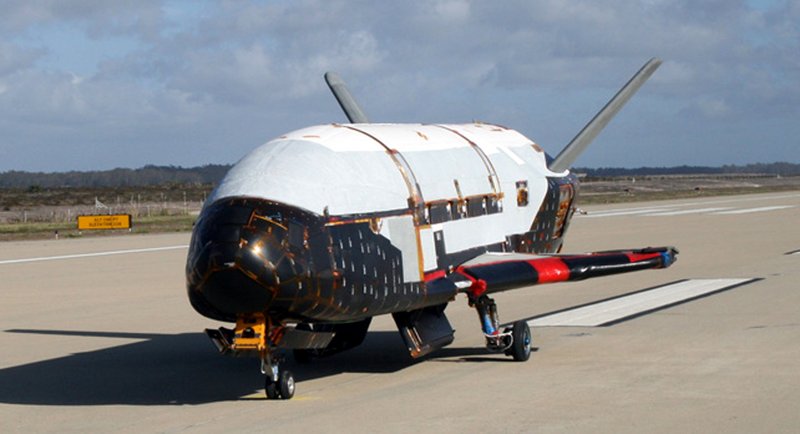LOS ANGELES — After a decade of development, the Air Force this month plans to launch a robotic spacecraft resembling a small space shuttle to conduct technology tests in orbit and then glide home to a California runway.
Details about the X-37B Orbital Test Vehicle, which has been passed between several government agencies, remain a mystery as it is prepared for launch April 19 from Cape Canaveral, Fla.
“As long as you’re confused you’re in good shape,” said defense analyst John Pike, director of Globalsecurity.org. “I looked into this a couple of years ago — the entire sort of hypersonic, suborbital, scramjet nest of programs — of which there are upwards of a dozen. The more I studied it the less I understood it.”
The quietly scheduled launch culminates the project’s long and expensive journey from NASA to the Pentagon’s research and development arm and then to a secretive Air Force unit.
Hundreds of millions of dollars have been spent on the X-37 program, but the current total has not been released.
The launch date, landing sites and a fact sheet were released by Air Force spokeswoman Maj. Angie I. Blair. She said more information would be released soon, but questions on cost and other matters submitted by e-mail weren’t answered by Friday.
While the massive space shuttles have been likened to cargo-hauling trucks, the X-37B is more like a sports car, with the equivalent trunk capacity.
Built by Boeing Co.’s Phantom Works, the 11,000-pound craft is 9½ feet tall and just over 29 feet long, with a wingspan of less than 15 feet. It has two angled tail fins rather than a single vertical stabilizer.
Unlike the shuttle, it will be launched like a satellite, housed in a fairing atop an expendable Atlas V rocket, and deploy solar panels to provide electrical power in orbit.
The Air Force released only a general description of the mission objectives: testing of guidance, navigation, control, thermal protection and autonomous operation in orbit, re-entry and landing.
The mission’s length was not specified but the Air Force said the X-37B can stay in orbit for 270 days. The primary landing site will be Vandenberg Air Force Base.
The significance of the X-37B is unclear because the program has been around for so long, said Peter A. Wilson, a senior defense research analyst for the RAND Corp. who several years ago served as executive director of a congressional panel that evaluated national security space-launch requirements.
“From my perspective it’s a little puzzling as to whether this is the beginning of a program or the end of one,” Wilson said Friday.
As NASA anticipated the end of the shuttle program, the X-37B was viewed as a working prototype of the next-generation design of a fully reusable spacecraft, but the space agency lost interest and the Air Force picked it up, Wilson said.
“It’s viewed as a prototype of a vehicle that could carry small payloads into orbit, carry out a variety of military missions and then return to Earth,” he said.
The Air Force statement said the X-37 program is being used “to continue full-scale development” and orbital testing of a long-duration, reusable space vehicle.
Wilson sees the upcoming launch as “a one-shot deal.”
He acknowledged that he does not know if there is a classified portion of the program, but said there is no evidence of a second vehicle being built to follow the prototype. In aerospace, a prototype typically remains a test vehicle used to prove and improve designs for successive operational vehicles.
To function as a completely reusable launch system, there would also have to be development of a booster rocket that is capable of landing itself back on Earth to be reassembled with the spacecraft, according to Wilson, who does not see any support for such an initiative.
Wilson also said the usefulness of payloads such as small military satellites is in question, which would undercut the need for the launch system. The X-37B is under the direction of the Air Force’s Rapid Capabilities Office. Its mission is to speed the development of combat-support systems and weapons systems.
Copy the Story Link
Send questions/comments to the editors.




Success. Please wait for the page to reload. If the page does not reload within 5 seconds, please refresh the page.
Enter your email and password to access comments.
Hi, to comment on stories you must . This profile is in addition to your subscription and website login.
Already have a commenting profile? .
Invalid username/password.
Please check your email to confirm and complete your registration.
Only subscribers are eligible to post comments. Please subscribe or login first for digital access. Here’s why.
Use the form below to reset your password. When you've submitted your account email, we will send an email with a reset code.